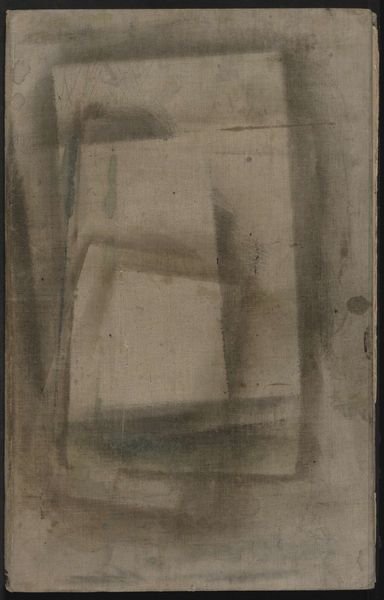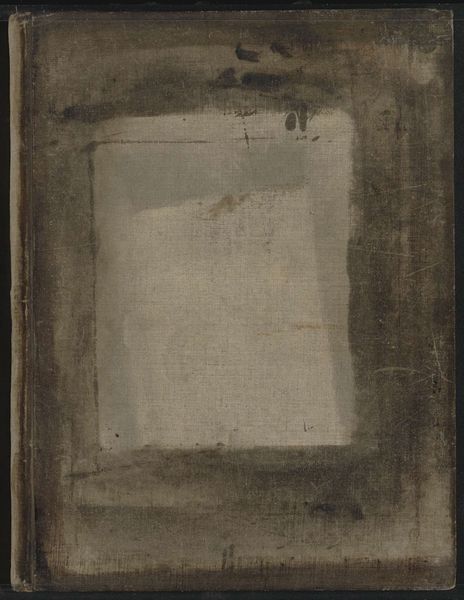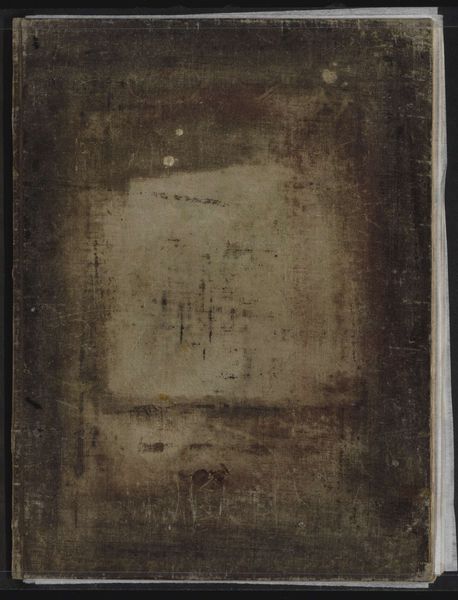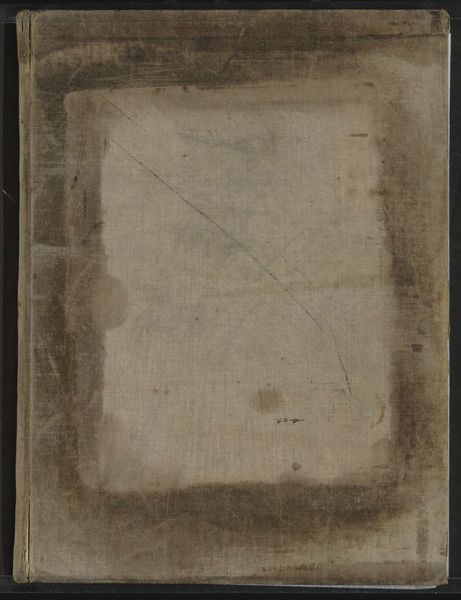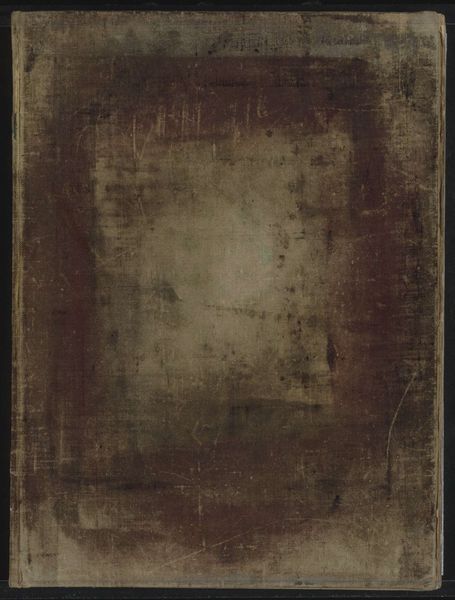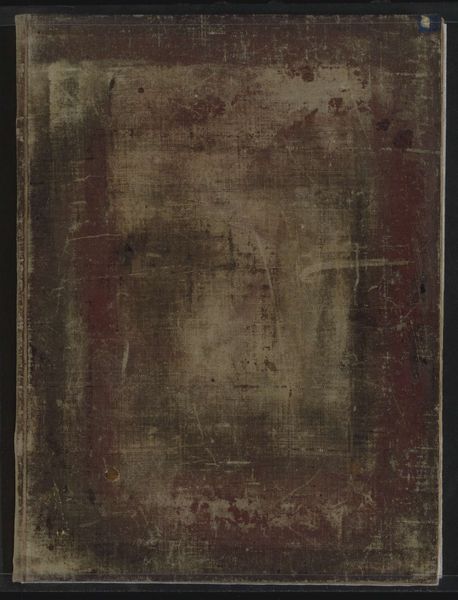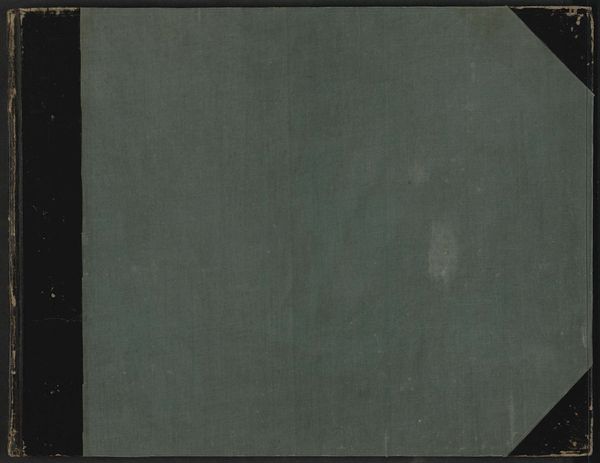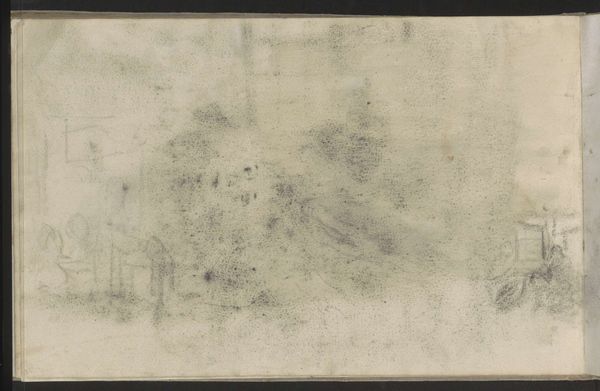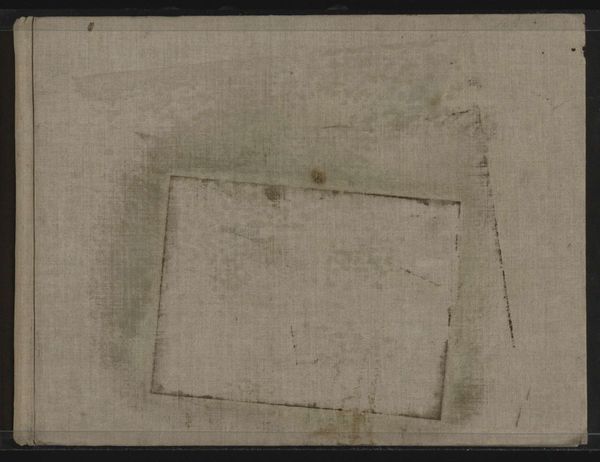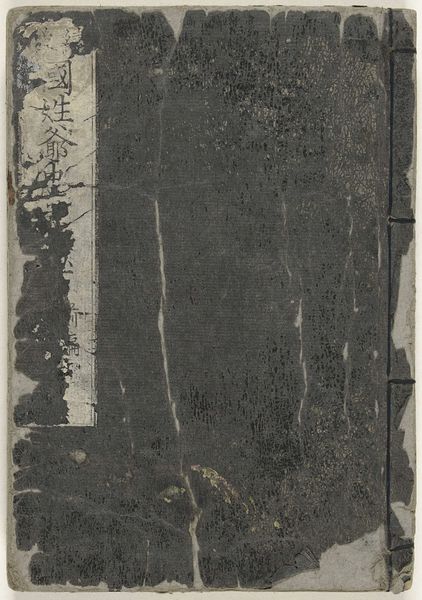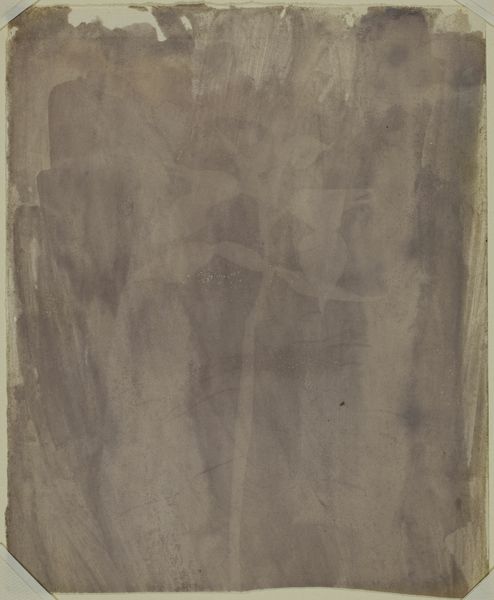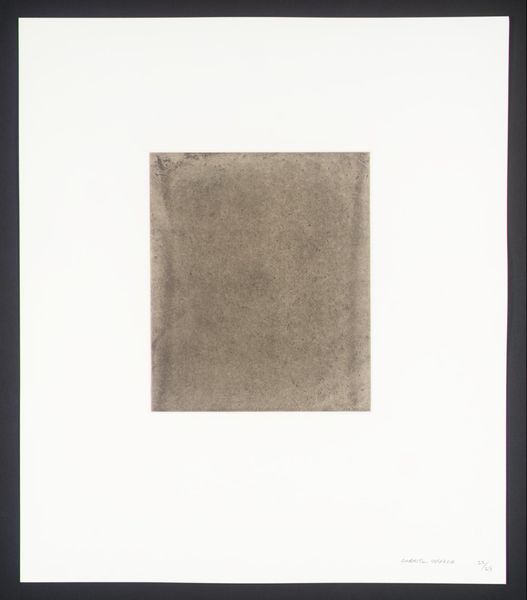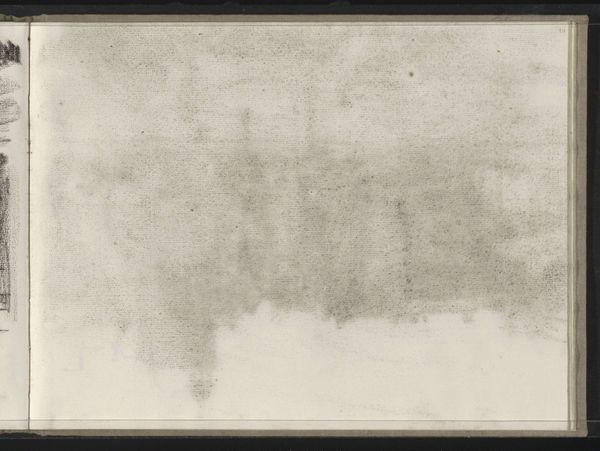
drawing, paper, watercolor
#
portrait
#
drawing
#
impressionism
#
paper
#
watercolor
#
abstraction
#
watercolor
Dimensions: height 515 mm, width 328 mm, thickness 18 mm, width 660 mm
Copyright: Rijks Museum: Open Domain
Editor: We are looking at Willem Witsen's "Sketchbook with 38 leaves" from around 1884-1887, a drawing made with watercolor on paper. I find it difficult to really see anything specific in this piece; what is your take on this artwork? Curator: Well, let's consider this sketchbook within the context of the late 19th century, a time when artists were breaking free from academic constraints and embracing experimentation. While the marks on the cover might seem abstract now, it functioned as protection and carried signs of the artist's process. Does it feel that way to you, as something generative or closed? Editor: I guess it's generative...knowing this sketchbook belonged to the artist and imagining his constant handling of it throughout the years. Curator: Exactly. We must remember the societal structures of the time; who had access to art, materials, education? Witsen was born into a wealthy family, allowing him access to these resources. How do you think privilege played a role in his artistic development, his freedom to explore abstraction, even within the confines of a seemingly mundane sketchbook? Editor: It's almost like his status gave him permission to experiment without the immediate pressure of producing something commercially viable. So the sketchbook can be viewed almost as a social document, displaying economic agency in its "unfinishedness". Curator: Precisely! Think of all the labor and exploitation that funded such pursuits in the Dutch colonial context of this time. It's not merely an object of aesthetic beauty, but a historical artifact embodying complex power dynamics. And that incomplete abstraction speaks volumes about who gets to leave things unresolved. Editor: I had not thought about that relationship to wealth and colonialism, thank you. Curator: My pleasure, there's much more than meets the eye on the surface.
Comments
No comments
Be the first to comment and join the conversation on the ultimate creative platform.
